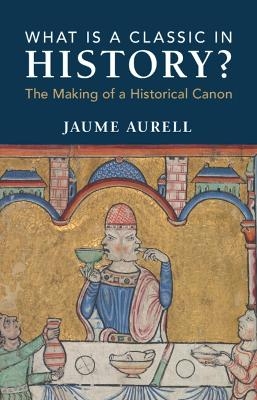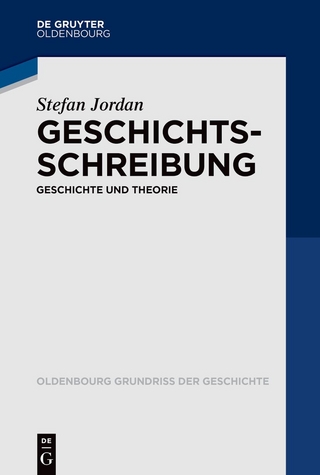
What Is a Classic in History?
The Making of a Historical Canon
Seiten
2024
Cambridge University Press (Verlag)
978-1-009-46996-8 (ISBN)
Cambridge University Press (Verlag)
978-1-009-46996-8 (ISBN)
Why do some historical works, such as those of Herodotus or Gibbon, capture the imaginations of readers across generations? This study explores the power of these so-called 'classics', investigating the construction and consolidation of historical genres while innovatively examining the historiographical canon.
What is a classic in historical writing? How do we explain the continued interest in certain historical texts, even when their accounts and interpretations of particular periods have been displaced or revised by newer generations of historians? How do these texts help to maintain the historiographical canon? Jaume Aurell's innovative study ranges from the heroic writings of ancient Greek historians such as Herodotus to the twentieth century microhistories of Carlo Ginzburg. The book explores how certain texts have been able to stand the test of time, gain their status as historiographical classics, and capture the imaginations of readers across generations. Investigating the processes of permanence and change in both historiography and history, Aurell further examines the creation of historical genres and canons. Taking influence from methodologies including sociology, literary criticism, theology, and postcolonial studies, What Is a Classic in History? encourages readers to re-evaluate their ideas of history and historiography alike.
What is a classic in historical writing? How do we explain the continued interest in certain historical texts, even when their accounts and interpretations of particular periods have been displaced or revised by newer generations of historians? How do these texts help to maintain the historiographical canon? Jaume Aurell's innovative study ranges from the heroic writings of ancient Greek historians such as Herodotus to the twentieth century microhistories of Carlo Ginzburg. The book explores how certain texts have been able to stand the test of time, gain their status as historiographical classics, and capture the imaginations of readers across generations. Investigating the processes of permanence and change in both historiography and history, Aurell further examines the creation of historical genres and canons. Taking influence from methodologies including sociology, literary criticism, theology, and postcolonial studies, What Is a Classic in History? encourages readers to re-evaluate their ideas of history and historiography alike.
Jaume Aurell is Professor of Medieval History at the University of Navarra. He has a particular interest in medieval and modern historiography. His previous publications include Medieval Self-Coronations (Cambridge, 2020), Theoretical Perspectives on Historians' Autobiographies (2015) and Authoring the Past (2012).
Introduction; 1. The conditions for durability; 2. The dynamics of the classic; 3. The inescapability of the canon; 4. The canonical function of historical genres; 5. Genealogy as double agent; Conclusions.
| Erscheinungsdatum | 13.02.2024 |
|---|---|
| Zusatzinfo | Worked examples or Exercises |
| Verlagsort | Cambridge |
| Sprache | englisch |
| Gewicht | 586 g |
| Themenwelt | Geisteswissenschaften ► Geschichte ► Geschichtstheorie / Historik |
| ISBN-10 | 1-009-46996-7 / 1009469967 |
| ISBN-13 | 978-1-009-46996-8 / 9781009469968 |
| Zustand | Neuware |
| Haben Sie eine Frage zum Produkt? |
Mehr entdecken
aus dem Bereich
aus dem Bereich
Russland, die Ukraine und der Westen
Buch | Softcover (2024)
De Gruyter (Verlag)
CHF 55,90
Geschichte und Theorie
Buch | Softcover (2024)
De Gruyter Oldenbourg (Verlag)
CHF 34,90
wie Irritationen historisches Denken anregen
Buch | Softcover (2024)
Kohlhammer (Verlag)
CHF 96,55


